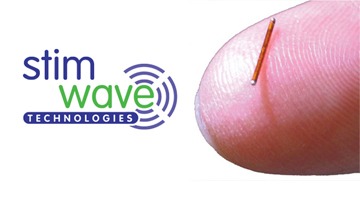
CE mark approval has been granted for the world’s first percutaneous injectable anchor system, SandShark. The Stimwave system is used to fixate the company’s wireless neurostimulator devices through a minimally-invasive outpatient procedure.
“A wireless system that enables clinicians to actually have the full programming capabilities of IPGs, all in a device that can be injected, represents a paradigm shift in the field of options to provide the best in customization for patients to manage their pain profiles,” says Bart Billet from AZ Delta hospital group in Roeselare, Belgium.
Once the stimulator is injected, the SandShark is slid down over the device to progress the un-deployed anchor into ligaments and strong connective tissues. Once the radiopaque anchor is in the desired location, the clinician pulls back on the handle, simultaneously deploying the wings of the anchor and pushing them laterally into the tissue. This injection process, according to a company release, secures the anchor to the stimulator and secures the stimulator to the surrounding tissue to prevent migration throughout the life of the micro-implant. The injectable anchor is intended to stay in line with the body’s nerves, allowing for a freedom of movement generally not available in other neuromodulation devices.
Stimwave’s devices, which use the company’s Wireless Pain Relief technology, are 95% smaller than any other neuromodulation device on the market and are the only system to have full body 3T magnetic resonance imaging conditionality at present. The CE marked Freedom-8A SCS system can provide European patients with up to 64 electrode contacts and, as well as traditional programming options, it is designed to offer programming options including frequencies up to 10,000Hz and waveform customisation. The system with eight electrodes uses the Apple iPad programmer with Bluetooth communication. The devices deliver small pulses of energy to specific nerves, intended to trigger a reaction that enables the brain to remap pain pathways, and thus provide pain relief.












